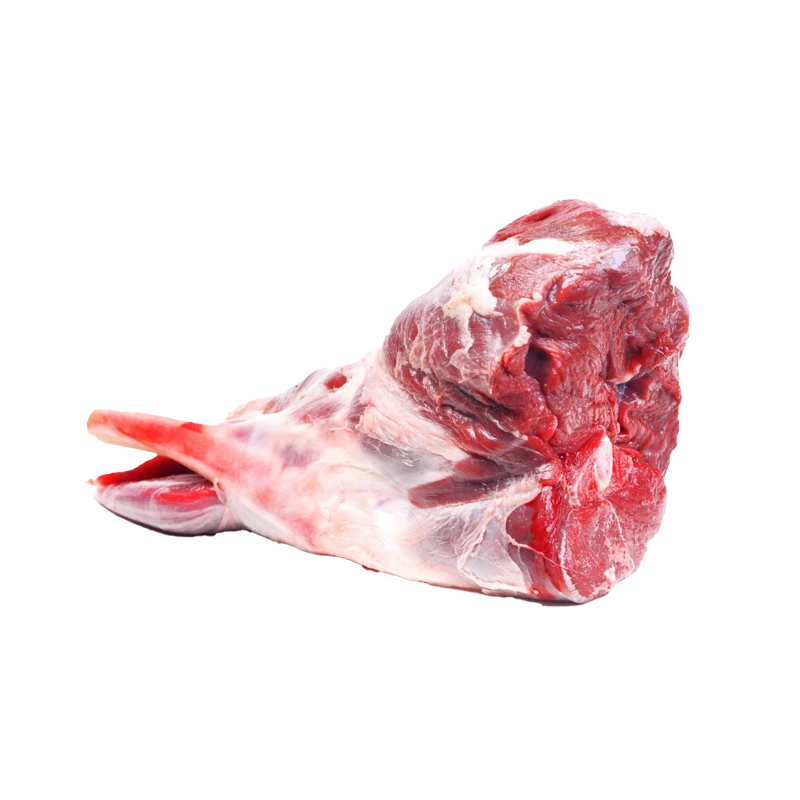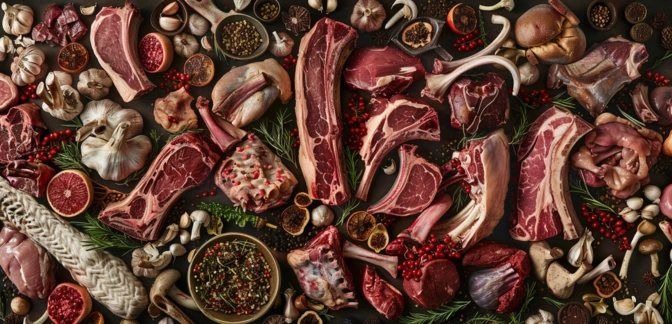Mutton — Nutrients, Health Benefits, And Shopping Tips

Written by Listonic Team
Last update on September 4, 2024
Nutrition facts
Nutrition facts
Amount per 100 g
Calories
🔥 294 kcal
| Nutrition per: 100 g | Value | % Daily Value* |
|---|---|---|
| Carbs | 0 g | - |
| Fiber | 0 g | - |
| Sugars | 0 g | - |
| Glycemic Index | 0 | - |
| Protein | 17 g | 34% |
| Sodium | 75 mg | 3.26% |
| Total Fat | 24 g | 30.77% |
*The % of Daily Value (DV) tells you how much a nutrient in a serving of food contributes to a daily diet. 2,000 calories a day is used for general nutrition advice.
17 g
🧀 Good Protein Content
Did you know?
Health benefits
- High in protein, essential for muscle growth, repair, and overall body function.
- Rich in essential vitamins and minerals such as Vitamin B12, zinc, iron, and selenium, which support energy metabolism, immune function, and overall health.
- Contains healthy fats, providing energy and supporting cell function.
- Supports muscle health due to its high content of essential amino acids.
Health risks
- High fat content particularly in certain cuts, which can raise cholesterol levels and increase the risk of heart disease when consumed frequently.
- High calorie content which can contribute to weight gain if consumed in large quantities or as part of a calorie-dense meal.
- Risk of contamination with harmful bacteria such as Salmonella or E. coli, particularly if the mutton is not properly cooked to a safe internal temperature.
- Potential for high sodium content in processed or seasoned mutton products, which can contribute to hypertension and increased cardiovascular risks.
How to choose mutton
Mutton should have a deep red color, indicating that it is mature and well-aged. The fat around the meat should be creamy white, which contributes to its rich flavor and moistness when cooked. The texture should be firm to the touch, suggesting the meat is fresh and of high quality.
Avoid mutton that appears dry or has a dull, pale color, as this can indicate poor handling or aging. Properly prepared mutton should offer a robust, slightly gamey flavor that is well-suited for slow-cooked dishes like stews and roasts.

How to store mutton
Raw mutton should be kept in the refrigerator, wrapped tightly in plastic wrap or butcher paper. Store it in the coldest part of the fridge to keep it fresh for up to five days. Freezing is recommended for longer storage.
Leaving mutton exposed to air can cause it to spoil quickly. Avoid storing it in the refrigerator door where temperatures vary. Always cook mutton within the recommended timeframe and use separate utensils to prevent cross-contamination with other foods.
✅ Extra Tip
How long does it last?
Mutton can last for 1-2 days in the refrigerator. For longer storage, mutton can be frozen for up to 6-9 months. Proper packaging, such as vacuum-sealing, helps maintain its quality over longer storage periods.
What to do with leftovers?
Leftover mutton can be used in a variety of rich and flavorful dishes. Shred the meat and add it to stews or soups for added depth, or mix it into a curry with spices, tomatoes, and coconut milk. Mutton is also great when used as a filling for meat pies or pasties, where its tender texture shines.
Use mutton in a casserole with root vegetables and a thick gravy, or mix it into a pasta dish with a robust sauce. If you have a lot of mutton, consider making a batch of mutton tacos with fresh salsa and avocado, or using it as a topping for pizzas or flatbreads. Mutton can also be added to a shepherd’s pie with mashed potatoes on top, or used as a filling for stuffed vegetables. For a quick snack, reheat the mutton and serve it with flatbread and a yogurt-based dipping sauce.
👨⚕️️ Medical disclaimer
Discover products from other categories
Listonic Team
Fact-checked
Our editorial team checked this article to make sure it was accurate at the time of publishing it.
Get the top-rated shopping list app on your phone!







